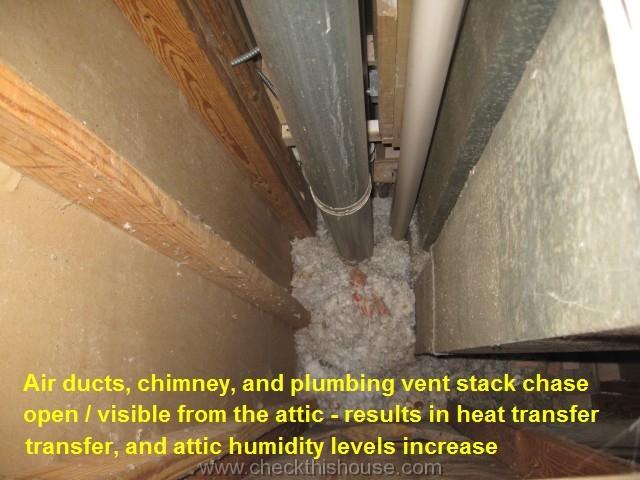Ductwork of less than 40 feet in unconditioned areas such as an attic if.
Any reason for an open duct in an attic.
I live in a 3 story townhouse and my return air ducts for the 3rd floor.
That saves time and whenever your contractor doesn t take as long to finish a project you save in labor too.
Naturally those considering vaulted ceilings or increasing headroom in their home will need to consider what s hidden above.
It also makes maintenance and or modification easier.
Those are valid reasons to do it so the real answer is to make the attic at least semi conditioned space.
Ductwork in the attic is subject to heat or cooling loss.
If the duct goes into any uninsulated space you ll need to have the duct itself insulated.
It s done this way because it s easier and cheaper to run a flex duct through a wide open space than to fit it through and around floor and wall framing.
It s a lot simpler for your installer to leave ductwork loose rather than having to cover it and wind it through floors and walls.
Once something shunned and banished to crawl spaces and attics exposed ductwork is on the rise as a design element and as an energy efficient solution.
Return duct open to attic i was up in the attic yesterday and noticed something about my return air duct that is strange.
It helps prevent ice dams in winter by keeping your roof cooler.
In more cases than not a 3 ton ac with the ducts in the attic has a ton or so of load that s just from the location of the ducts in the attic and the associated duct gains leakage etc.
To reset the switch you ll need to climb up into the attic and push the button manually.
A closed system must work even harder due to cold loss through the evaporator and duct work.
If you have a soffit with ducts in it and there is a small duct leak due to imperfect mastic at a duct seam the entire soffit can become pressurized.
If there are any tiny leaks in the home s thermal envelope for example rim joist leaks or ceiling leaks the pressurized soffit will assure that lots of air escapes through a small hole in the thermal envelope.
It prevents moisture buildup that can cause mildew and rot in the attic framing and sheathing.
I can t think of any reason not to run the duct through any open path.
The remaining 2 tons of capacity is at least 1 5x oversized for the actual 1 load.
And on a vertical run between floors i like to have a fire block between the floors but that may not be code in a single family dwelling.

